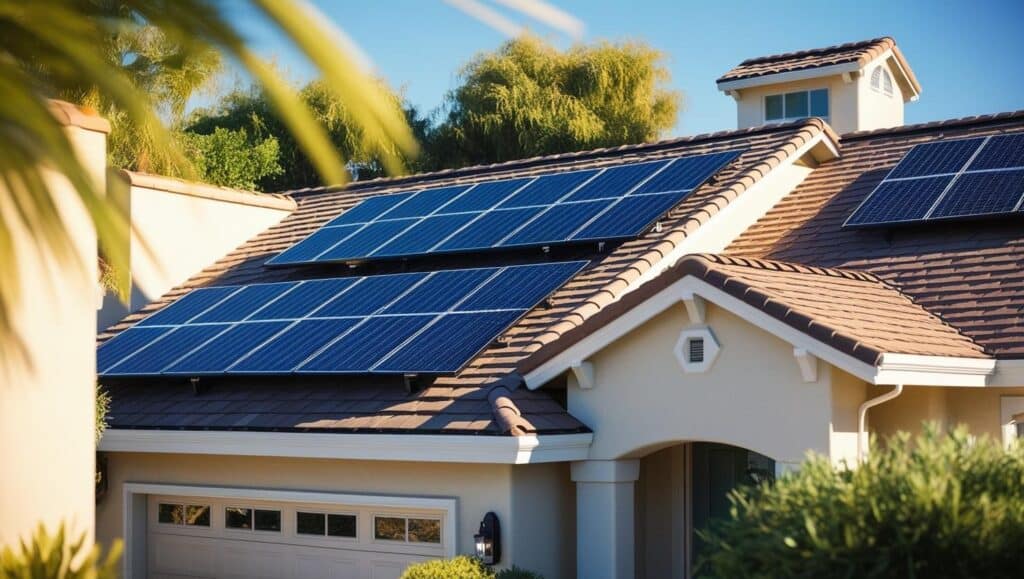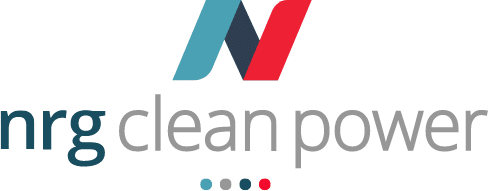
The payback period for solar panels in California isn’t one-size-fits-all—it’s usually somewhere between 5 and 10 years, with an average landing around 7.5 years. That’s the time it takes for your solar investment to pay for itself through energy savings and any incentives you qualify for.
California’s sky-high electricity rates and abundant sunshine mean homeowners here often hit the lower end of the payback spectrum—especially compared to cloudier or cheaper-energy states.
Think of it like this: Solar panels generate electricity, offsetting your energy bill, and the payback period is just a calculation of when those monthly savings add up to what you paid for the system in the first place. Factors like installation complexity, local regulations, and available rebates can sway this timeline.
Let’s make it real with an example: Imagine you’ve got a 5kW system costing between $11,401 and $13,111 pre-incentives. Apply the federal tax credit—a hefty 30%—and that drops to $7,981 to $9,177. If you’re saving $2,000 a year on electricity (which isn’t far-fetched in California), your payback lands around 4 to 4.6 years.
NB: For accurate cost estimation and incentives, visit the Department of Energy’s Solar Guide or California’s own Go Solar California initiative.
Pretty good deal, right?
Now, what tweaks that timeline? Things like:
- How much your system cost to install
- What you’re paying for electricity (hint: California’s average of $0.29/kWh is steep)
- Incentives you stack on top (hello, tax credits and rebates)
- How much power you use
- The size and efficiency of your solar system
- Installation difficulty or roof suitability
California’s cocktail of high utility rates, generous incentives, and unbeatable sunshine gives it a distinct edge over most of the U.S. when it comes to solar payback speed.
What Factors Influence the Payback Period for Solar in California?
Your solar payback period isn’t just about how much you save—it’s about what you’re up against, cost-wise, and a mix of other key elements. Here’s the rundown:
Electricity Costs
California electricity isn’t cheap—it’s among the priciest in the U.S., averaging $0.29 per kWh. That’s 71% higher than the national average. In hotspots like San Diego, rates can rocket to $0.47/kWh. Translation? Solar saves you more here, and your payback period gets a head start.
Solar Panel Costs
On average, installing solar costs $2.28 to $3.14 per watt in California. So, a typical 5kW system might range from $11,400 to $15,700. If you snag the lower end of that price range, you’re looking at a faster payoff.
Incentives and Rebates
California’s a treasure trove of solar incentives. Highlights include:
- The 30% federal tax credit (Investment Tax Credit, or ITC)
- Rebates from the Self-Generation Incentive Program (SGIP) for adding battery storage
- A property tax exemption for solar installations
Net metering also helps—but NEM 3.0 cut export rates, meaning savings now hinge more on using your own solar power than selling it back to the grid.
Installation Complexity
A straightforward installation on a simple roof will cost less and deliver a quicker payback compared to systems installed on roofs with challenging angles, shading issues, or structural needs. Complex installations increase labor and material costs, which can nudge the payback period longer.
Local Regulations
California’s pro-solar policies streamline permitting and inspections, cutting delays and costs that might extend the timeline elsewhere. However, certain local codes—like fire setbacks—might restrict system size, impacting efficiency and savings.
System Efficiency
Not all solar setups are created equal. A south-facing roof with minimal shade in sunny SoCal will outshine a shaded, west-facing setup in cooler NorCal.
Energy Consumption
Using more energy means you’re offsetting more of your bill with solar power. A high-usage household will see a shorter payback period than a small, low-energy home. These puzzle pieces all fit together differently for each home.
For instance, a 6kW system in San Francisco might pay off in 5-6 years, while the same setup in Fresno could hit 4-5 years—more sunshine and lower costs make a big difference.
How Do Solar Incentives in California Affect Payback Periods?
Solar incentives in California are the ultimate accelerators for shortening payback periods, turning an otherwise hefty upfront investment into something far more accessible. Here’s the breakdown of what you can expect:
Federal Investment Tax Credit (ITC)
The federal ITC allows you to deduct 30% of the cost of your solar system from your federal taxes. For instance, a $20,000 system could save you $6,000 right off the bat, reducing your net cost to $14,000. The ITC applies to both solar panels and battery storage systems that are installed at the same time.
For detailed eligibility and guidelines, visit the Energy.gov.
Self-Generation Incentive Program (SGIP)
California’s SGIP provides rebates specifically for adding battery storage. The amount varies depending on your circumstances:
- Standard rebate: $200 per kWh of battery capacity
- Equity rebate: $850 per kWh for low-income households
- Equity resiliency rebate: $1,000 per kWh for residents in high fire-risk areas or those heavily affected by Public Safety Power Shutoffs (PSPS)
For example, a 10kWh battery could yield rebates from $2,000 to $10,000, slashing upfront costs dramatically.
Net Energy Metering (NEM)
Although NEM 3.0 reduced the value of exported energy credits, net metering still offsets costs by allowing homeowners to consume their own solar power first. Maximizing self-consumption has become more crucial, making battery storage an even smarter addition.
Property Tax Exemption
In California, solar systems are exempt from property tax assessments. While solar increases your home’s value (often by tens of thousands), you won’t see an uptick in your tax bill. This exemption is a critical advantage for homeowners looking to boost their property value without added expenses.
Examples of Payback Acceleration
Let’s walk through a scenario:
- System cost: $18,000
- ITC savings: -$5,400
- Net cost: $12,600
- Annual savings: $2,100 from lower electricity bills
- Payback time (with ITC only): 6 years
If you qualify for an SGIP rebate (say $3,000 for a battery), your payback period could shrink to just 4-5 years, making the investment even more appealing.
In short, these incentives can cut 2-4 years off your payback period and make solar a financially sound decision for most California homeowners.
How Much Do Solar Panels Cost in California?
Solar panel costs in California aren’t uniform—they vary based on system size, location, and additional components. Here’s a full breakdown to help you understand what you’re looking at:
Cost Per Watt
California homeowners typically pay between $2.28 and $3.14 per watt for solar panels. That’s slightly lower than the national average of $3.03 per watt, making solar a more accessible option in the Golden State.
Total System Costs
For a typical 5kW system:
- Before incentives: $11,401 to $15,700
- After the 30% federal tax credit: $7,981 to $10,990
Cost by System Size (After Federal Tax Credit)
- 3kW: $4,788 to $6,599
- 5kW: $7,981 to $10,990
- 7kW: $11,173 to $15,386
- 10kW: $15,962 to $21,980
Regional Variations
Solar installation prices in California can vary significantly depending on where you live. For instance, urban areas like Los Angeles or San Diego often have higher labor costs, while more rural areas might see slightly lower installation expenses. Local permitting fees, which range from $200 to $500, also impact the final price.
Additional Components
If you’re looking to enhance your system, here are some common add-ons:
- Solar batteries: Add $7,000 to $15,000
- Monitoring systems: $200 to $500
The Long-Term Picture
While upfront costs might feel steep, the savings over time make solar an investment that pays for itself. A standard 5kW system in California can generate up to $115,966 in savings over 25 years. Even with higher initial costs in some regions, the returns are hard to ignore.
How Do California’s Energy Rates Affect Solar Payback?
California’s energy rates are a solar customer’s best friend. Here’s why:
High Energy Costs
At $0.29 per kWh (and climbing), California’s average electricity rate is 4th highest nationwide. In places like San Diego, it’s even steeper—hitting upwards of $0.47/kWh. The higher the rate, the bigger the savings when you go solar.
Take this example:
- 6kW system producing 9,000 kWh annually
- At $0.29/kWh: Annual savings = $2,610
- At $0.47/kWh (San Diego rates): Annual savings = $4,230
Those higher local rates cut your payback period dramatically, often down to 3-4 years in areas like San Diego.
Faster Payback
Let’s crunch the numbers:
- System cost (post-incentives): $15,000
- Annual savings in California (avg.): $2,610
- Payback time (avg.): 5.7 years
Compare that to the national average, where annual savings hover around $1,530—stretching payback to nearly 10 years.
Time-of-Use (TOU) Plans
TOU rates make solar even more attractive. Here’s how it works:
- Utilities charge higher rates during peak hours (afternoons/evenings).
- Solar systems generate most energy during peak hours, reducing reliance on expensive grid power.
For example:
- Peak TOU rate: $0.40/kWh
- Off-peak rate: $0.20/kWh
- If half of your solar offsets peak rates, annual savings can increase by $315 (50% of 4,500 kWh x $0.20/kWh).
Long-Term Savings
California electricity rates have been rising by 4.1% annually—one of the highest increases nationwide. Here’s how that impacts your savings:
- Year 1 savings (9,000 kWh at $0.29/kWh): $2,610
- Year 10 savings (at $0.43/kWh): $3,870
- 25-year savings (avg.): $115,966
Case Study: Los Angeles vs. San Diego
- Los Angeles (LADWP rates): $0.23/kWh; payback = ~7 years
- San Diego (SDG&E rates): $0.47/kWh; payback = ~4 years
Higher energy rates equal faster payback. If you’re in California, the math almost always tilts in favor of solar—especially if you’re in high-rate areas like San Diego.
How to Calculate the Payback Period for Solar in California
Calculating the payback period for solar panels in California involves multiple steps. Each step brings you closer to understanding how long it will take for your investment to pay off.
Step 1: Find Your Net Cost
To start, determine the total cost of your solar system after incentives:
- Example: A 6kW system costs $18,000.
- Subtract the 30% ITC (Investment Tax Credit): $18,000 – $5,400 = $12,600 net cost.
This adjusted amount forms the basis for your payback calculation.
Step 2: Estimate Annual Energy Production
The amount of energy your system generates annually depends on factors like location and system size. Tools like NREL’s PVWatts Calculator can provide accurate estimates:
- Example: In San Diego, a 6kW system might produce 9,600 kWh annually.
- Other factors, such as shading, orientation, and panel efficiency, may slightly adjust this figure.
Step 3: Calculate Annual Savings
Next, multiply your system’s annual energy production by your local electricity rate:
- 9,600 kWh x $0.29 (California average rate) = $2,784 annual savings.
- Adjust for regional rates, such as $0.47/kWh in San Diego during peak hours, for a more tailored estimate.
Step 4: Account for Inflation and System Degradation
Both electricity rate inflation and solar panel degradation affect long-term savings:
- Inflation: California’s electricity rates historically rise by 4.1% annually, boosting savings over time. For instance:
- Year 1: $2,784
- Year 10: $3,734 (with inflation)
- Degradation: Solar panels lose about 0.5%-0.8% efficiency annually. By year 10, your system might produce 9,120 kWh instead of 9,600 kWh.
Step 5: Divide Cost by Annual Savings
Now, divide the net cost of your system by your annual savings:
- $12,600 / $2,784 = 4.53 years for simple payback.
For a more dynamic estimate, incorporate both inflation and degradation:
- Savings increase with inflation, while energy production decreases slightly over time.
Step 6: Consider Maintenance Costs
Factor in occasional maintenance expenses:
- Annual maintenance: $100-$300/year for cleaning and inspections.
- Inverter replacement: $1,000-$2,500 every 10-15 years.
These costs have a minor impact but should be included for accuracy.
Example with Adjustments
Here’s a complete example:
- Initial savings: $2,784/year.
- Year 10 savings: $3,734/year (with inflation).
- Year 25 savings: $6,297/year (accounting for degradation and rate increases).
With all factors considered, you can refine your payback period and gain a clearer picture of your system’s long-term value.
FAQs About Solar Payback Periods in California
Do solar panels require expensive maintenance?
Solar panels generally require minimal maintenance, costing around $100-$300 per year. This includes:
- Annual inspections: $150-$300
- Cleaning: $50-$100 per session (1-2 times per year)
How do batteries affect the payback period?
Adding battery storage typically extends payback by 3-5 years. For instance:
- Solar-only system: ~5 years
- Solar + battery: ~8-10 years
However, benefits like backup power and TOU optimization can make batteries worthwhile.
What is the typical lifespan of a solar system?
Solar panels last 25-30 years, often retaining 80% efficiency after 25 years. Inverters last 10-15 years and may need replacement once during the system’s lifespan.
Can I benefit from solar if I sell my home early?
Yes, solar increases home value and speeds up sales. A 6kW system can add ~$22,000 to the resale price, making it a smart investment even if you sell before breaking even.
Solar Payback Period in California, Recap
Investing in solar in California is more than just a financial decision—it’s a lifestyle choice that aligns with environmental responsibility, energy independence, and long-term savings. By capitalizing on the state’s abundant sunshine, robust incentives, and sky-high energy costs, homeowners can turn an upfront expense into a rewarding investment.
For many, the allure of solar lies in the numbers: payback periods averaging 5-10 years, savings that can exceed $115,000 over 25 years, and significant reductions in monthly utility bills. Yet, it’s not just about the economics. Solar power provides a sense of autonomy from fluctuating energy markets, and for those adding battery storage, it offers a safeguard against power outages—an increasingly vital asset in California’s fire-prone regions.
Beyond personal benefits, adopting solar contributes to a larger goal: reducing reliance on fossil fuels and supporting a cleaner, greener energy future. California has long been at the forefront of renewable energy, and every new solar installation strengthens that legacy.
Ultimately, the decision to go solar is as much about your values as it is about your wallet. Whether you’re motivated by the promise of savings, the appeal of energy independence, or the desire to leave a smaller carbon footprint, solar power in California delivers on all fronts. The journey to solar may require research and planning, but the payoff—financial, personal, and environmental—is well worth the effort.

